Fox News Flash top headlines for September 30
Fox News Flash top headlines are here. Check out what's clicking on Foxnews.com.
Wildfires burning throughout Brazil have reached a historic high with the majority of them once again impacting the Amazon rain forest.
According to data from the Brazilian National Institute for Space Research, from Sept. 1 to the 27th, nearly 29,900 fires burned in the Amazon – an increase of 50% in relation to the entire month in 2019.
It is the highest tally at the Amazon, the world’s largest tropical forest that is home to 20% of the fauna and flora species on the planet, since 1998, when the country began counting the fires.
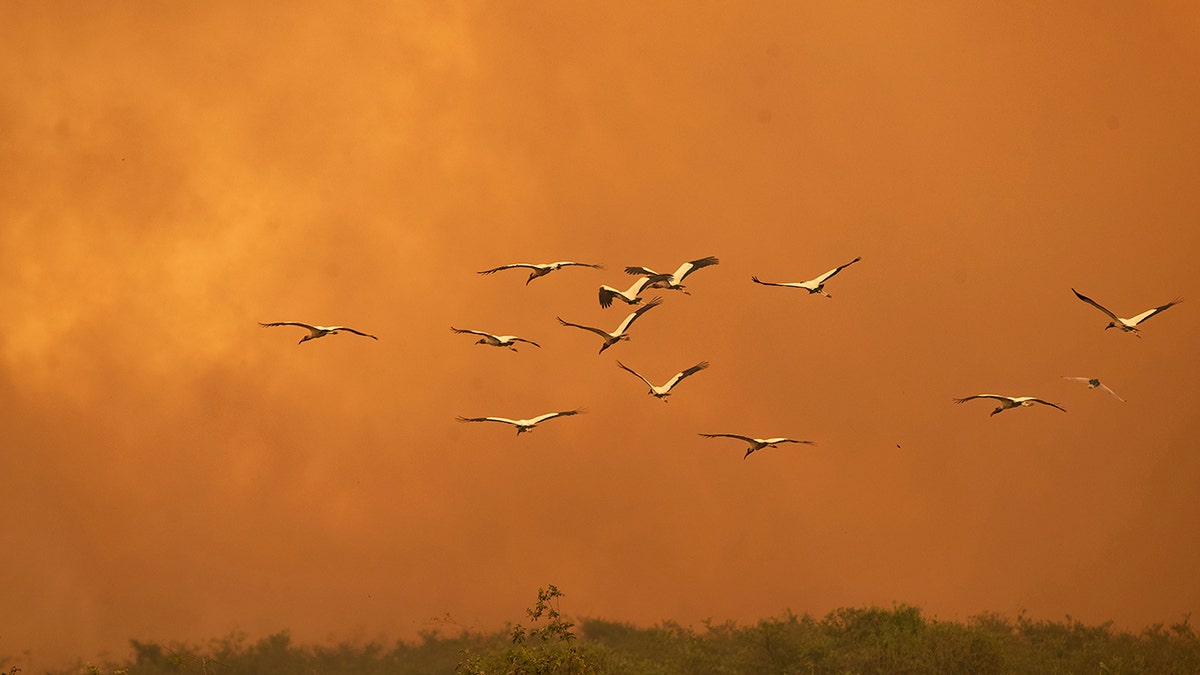
Birds fly past as a fire consumes an area next to the Trans-Pantanal highway in the Pantanal wetlands near Pocone, Mato Grosso state, Brazil, Friday, Sept. 11, 2020. As of Sept. 13, 19% of the Pantanal had been consumed by fire, according to a satellite laboratory at the Federal University of Rio de Janeiro. (AP Photo/Andre Penner)
AMAZON CONTINUES TO BURN IN 2020 WITH WILDFIRES DESPITE PROMISES TO SAVE IT
In Pantanal – the world’s largest flooded grasslands – officials are seeing its worst month since 2010. Data shows that over the same period this month, 6,796 fires have been recorded, an increase of more than 135% compared to 2019. The fires there have already burned an area equivalent to 23 times the size of New York City and will soon reach Bolivia.
But the data only shows one part of the problem.
Deforestation in the Amazon in 2019 was 85% higher than the previous year. The growth from August 2019 until July 2020 was 34%. According to experts, a number of factors contribute to September’s records, but the biggest culprit for the considerable increase in fires is illegal human action.

Fire consumes an area next to the Trans-Pantanal highway in the Pantanal wetlands near Pocone, Mato Grosso state, Brazil, Friday, Sept. 11, 2020. Diminished visibility from fires in the Pantanal and the neighboring Amazon forced President Jair Bolsonaro's plane to abandon a Sept. 18 landing attempt in the state of Mato Grosso. (AP Photo/Andre Penner)
Biologist Rômulo Batista explains that August, September and October are the driest months in both biomes, which contributes to the increase in the number of fires. But what differs this year from other periods is actually done by human action.
Loggers are burning the organic material left over from illegal deforestation done in 2019.
CALIFORNIA WILDFIRE RAGES THROUGH NAPA VALLEY AS GLASS FIRE BRINGS RESIDENTS 'FIRE FATIGUE'
According to Instituto Socioambiental (ISA), 45% of the deforested forest in 2019 was not burned last year and has been serving as fuel to increase the intensity of the fires in the Amazon.
Batista says loggers have been stimulated by President Jair Bolsonaro, who has promised to reduce protected areas in Brazil, increase deforestation and stop the demarcation of indigenous regions. And he’s been keeping those promises.
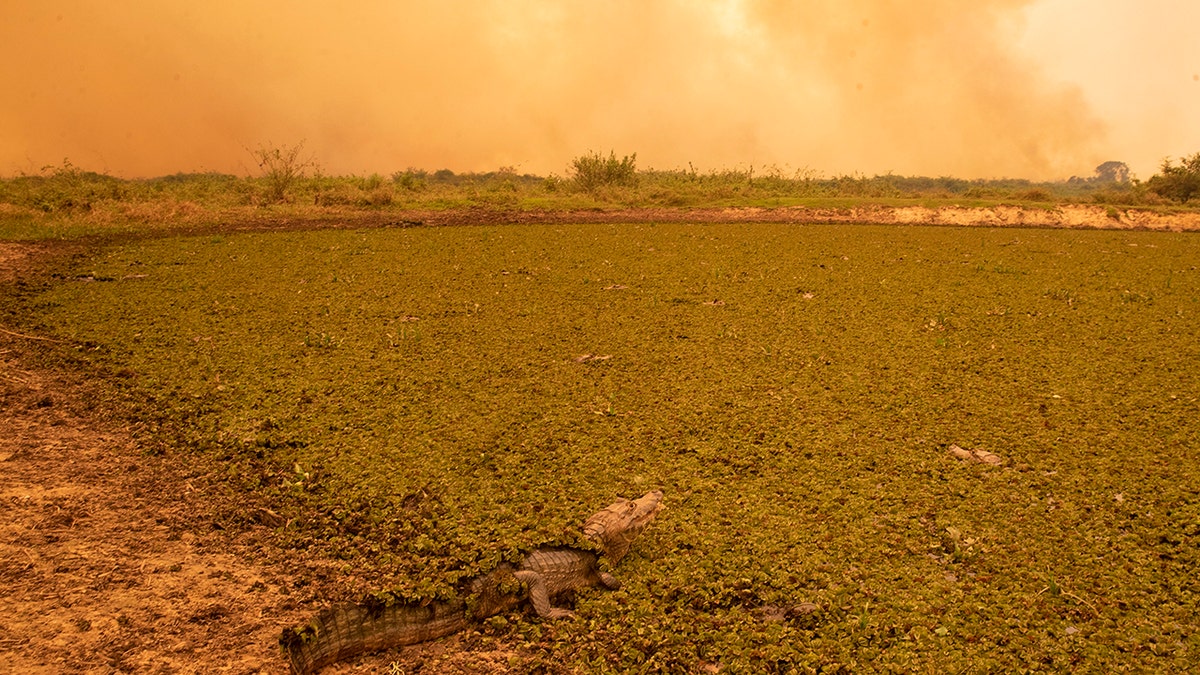
A caiman sits in a field of green as a fire consumes an area next to the Trans-Pantanal highway in the Pantanal wetlands near Pocone, Mato Grosso state, Brazil, Friday, Sept. 11, 2020. Jair Bolsonaro’s government says it has mobilized hundreds of federal agents and military service members to the region to douse the flames. However, all along the only highway through the northern Pantanal, dozens of people — firefighters, ranchers, tour guides and veterinarians — told The Associated Press that the government has exaggerated its response and there are few federal boots on the ground. (AP Photo/Andre Penner)
Last year, the president admitted to having "potentialized" loggers and farmers to light fires in the Brazilian Amazon. Last month, he announced the reduction of R$184 million ($33 million) in the budget for the Ministry of Environment.
On Monday, its minister, Ricardo Salles, announced a new measure ending the protection of ecosystems such as mangroves and restingas, present throughout the Brazilian coast.
During a speech for the UN General Assembly for the United Nations (UN) last week, Bolsonaro accused the country’s indigenous population of being responsible for the fires in the Amazon and then blamed Venezuela.
He said there is a "campaign supported by shady interests" by "international institutions" with "Brazilian associations, profiteers, and unpatriotics." The objective, according to him, is to harm his government but didn’t provide any data to prove his accusations, strongly repelled by experts
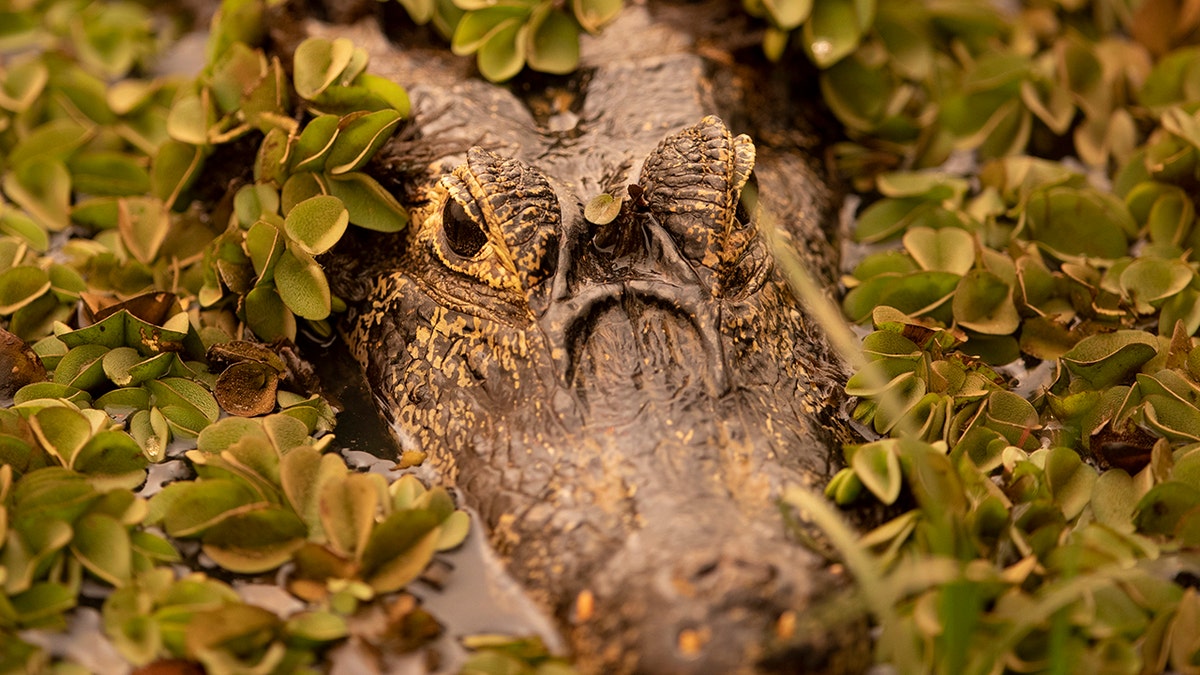
A caiman peeks out from a field of green as a fire consumes an area next to the Trans-Pantanal highway in the Pantanal wetlands near Pocone, Mato Grosso state, Brazil, Friday, Sept. 11, 2020. The Pantanal is the world’s largest tropical wetlands, popular for viewing jaguars, along with caiman, capybara and more. This year the Pantanal is exceptionally dry and burning at a record rate. (AP Photo/Andre Penner)
Batista condemned the president’s remarks, saying that an estimated 90% of deforestation is done illegally by loggers and farmers.
“Brazilian native population is one of the most fragile economically and in terms of protection by the state. They are essential for the preservation of forests and depend on it for their survival,” he said. “They are the population most affected by fires, deforestation, illegal mining, and the invasion by farmers of their territories. There is a public position of complete inaction restraining and punishing these attitudes, including decreasing funds for inspection. The speech is actually the opposite: to continue the destruction, but saying it is to invest more in the region.”
RENOWNED MICHELIN-STARRED RESTAURANT IN NAPA VALLEY BURNS IN CALIFORNIA WILDFIRE
Criticism from the international community against Bolsonaro’s environmental policies has gained steam recently.
German Chancellor Angela Merkel and other world leaders have already threatened to review, or even cancel, economic agreements with Brazil due to the increases in fires and deforestation.
The German leader has expressed "great concern" over the "dramatic" situation under Bolsonaro’s administration on environmental and human rights issues.
In April, more than 600 European scientists and about 300 indigenous people asked the European Union to link imports from Brazil to the protection of the environment and human rights. The request was made in a letter published in the scientific journal Science.
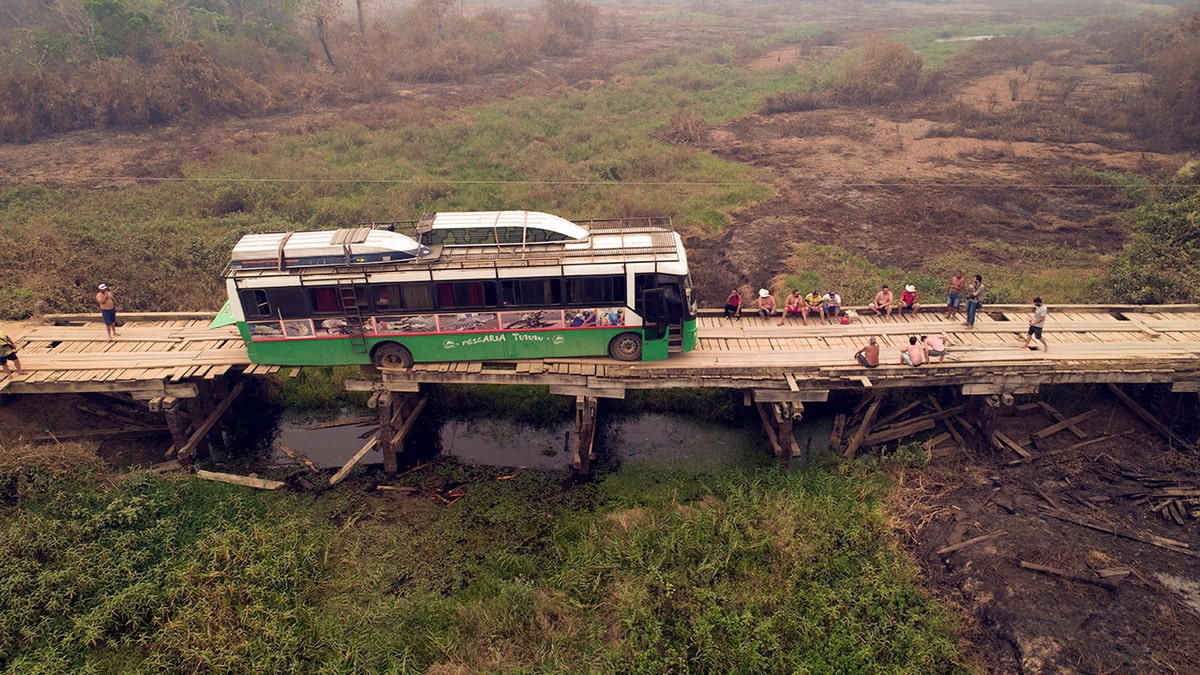
Tourists sit on a bridge railing after their sports fishing tour bus became stuck on a bridge damaged by wildfires, on the Trans-Pantanal highway in the Pantanal wetlands near Pocone, Mato Grosso state, Brazil, Friday, Sept. 11, 2020. Both sides of the highway usually feature pools of water, even in its dry season. (AP Photo/Andre Penner)
Salles recently shared a video stating that the Amazon was not burning, which was proved a fake.
Regarding the situation currently observed in the Pantanal, Salles admitted on Tuesday that fire in the region took on a "gigantic" proportion.
“In fact, the damage to our fauna is great, the flora and the vegetation part is recovering, now it cannot be a fire of the gigantic proportion that is being so that we are fighting strongly,” he said in an interview to Radio Bandeirantes.
CLICK HERE TO GET THE FOX NEWS APP
The Amazon is an important carbon reservoir and fundamental in the regulation of rainfall, mainly in the Southern Hemisphere.
“Amazon trees function as geysers, extracting water by the roots, taking their water through the trunk to the leaves, that (is) evaporated and then send water into the atmosphere,” said Antonio Nobre, a researcher at the National Institute for Research in the Amazon (INPA) and the National Institute for Space Research (INPE).
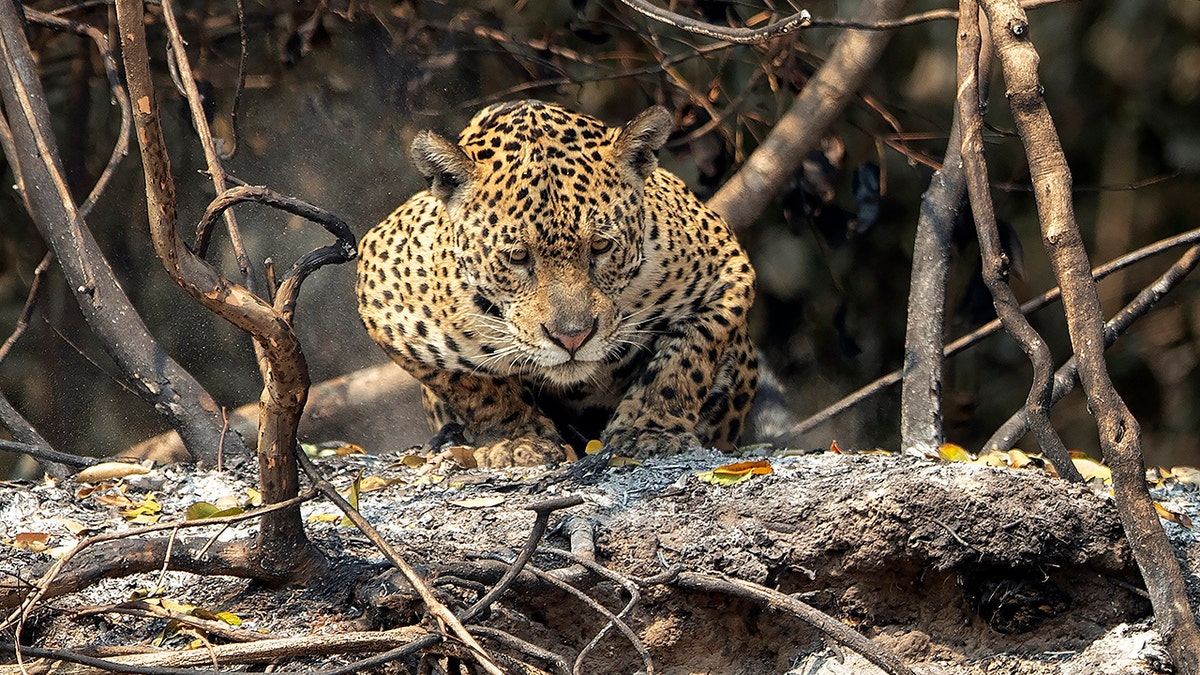
A jaguar crouches in an area recently scorched by wildfires at the Encontro das Aguas state park in the Pantanal wetlands near Pocone, Mato Grosso state, Brazil, Sunday, Sept. 13, 2020. The Pantanal is the world’s largest tropical wetlands, popular for viewing the furtive felines, along with caiman, capybara and more. This year the Pantanal is exceptionally dry and burning at a record rate. (AP Photo/Andre Penner)
Likewise, Pantanal is home to several species of animals, such as the jaguar, the largest cat in the Americas.

